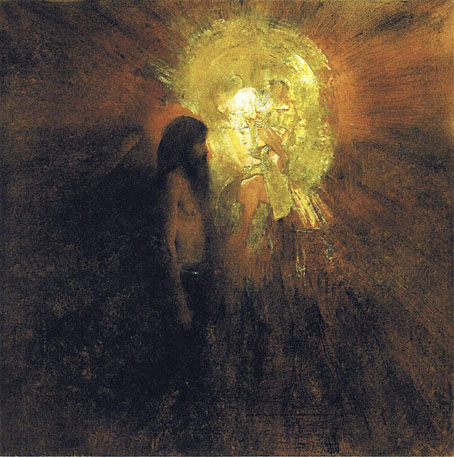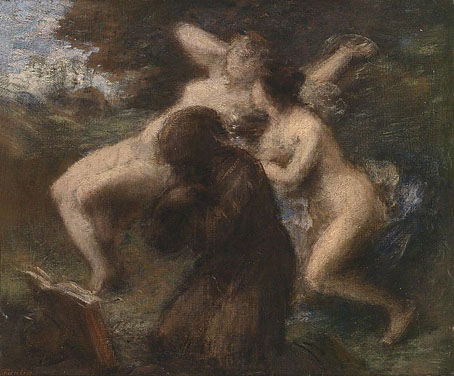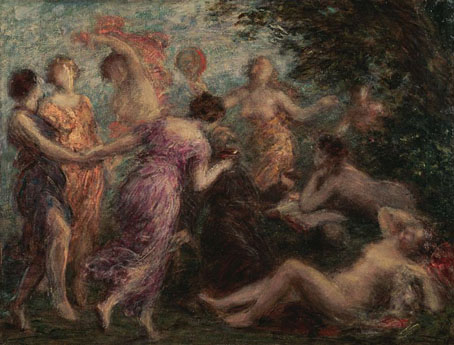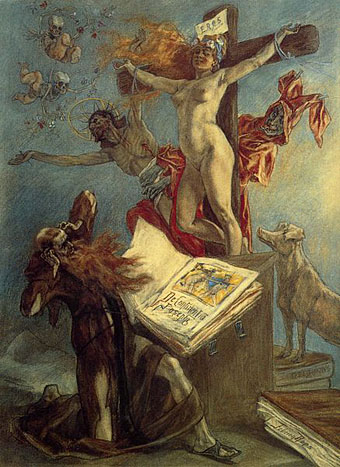
The Temptation of St Anthony (1883) by Fernand Khnopff.
This should really be more Symbolist Temptations since Odilon Redon belongs among these artists. Redon may have devoted more of his time than anyone else to the saint’s travails but other artists also took up the theme. Fernand Khnopff seldom depicted religious subjects but his painting—an early work—is remarkable for the way it reduces the phantasmagoric pageants of previous centuries to a simple face-to-face confrontation.
The Temptation of St Anthony (1878) by Félicien Rops.
Félicien Rops, on the other hand, can always be relied upon to be vulgar and blasphemous in equal measure. The Devil lurking behind the cross was probably added to balance the composition but that silly expression makes the picture seem more comical than shocking. Similar skull-faced cherubs may be found in other Rops prints.

The Temptation of St Anthony (c. 1893) by Henri Fantin-Latour.
Fantin-Latour is known today mainly for the painting of a basket of roses that Peter Saville used as the cover for New Order’s Power, Corruption and Lies in 1983. The artist painted flowers obsessively for most of his career, and also produced some notable portraits including this one which captures Verlaine and Rimbaud sitting together at a table. The two paintings here are from a late Symbolist phase which also included Wagnerian themes.

The Temptation of St Anthony (undated) by Henri Fantin-Latour.
Also of note from this period are two paintings (here and here) by Lovis Corinth, one of which is credited as being “after Flaubert”. Corinth wasn’t a Symbolist but he nevertheless enjoyed the collision in the St Anthony story between religion and unbridled lust.
Previously on { feuilleton }
• Odilon Redon’s Temptations
• Temptations


The two paintings here are from a late Symbolist phase which also included Wagnerian themes.
I don’t know if “late” is the right word; Fantin-Latour was painting & printing musical allegories all through his career from the 1860s onwards (they stood out in the 2009 show of his work at the Fundaçao Calouste Gulbenkian).
silly expression makes the picture seem more comical than shocking
A silly expression AND bunny ears.